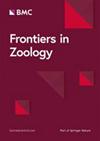Massive citizen science sampling and integrated taxonomic approach unravel Danish cryptogam-dwelling tardigrade fauna
IF 2.6
2区 生物学
Q1 ZOOLOGY
引用次数: 0
Abstract
Tardigrade diversity and distribution are enigmatic in most parts of the globe, and only some European countries can boast of a relatively well-studied water bear fauna. However, even these suffer from the lack of genetic data, which would substantiate faunistic data and make biogeographic comparisons easier. Denmark has never been intensively and systematically researched in this regard, thus a citizen science sampling of cryptogams (mosses, liverworts, and lichens) was launched in spring 2023, aiming at a comprehensive biodiversity survey across this insular country. Nearly 700 samples were selected out of 8.000 sent to NHMD, based on the quality of samples, representativeness of various regions of Denmark, and the type of substrate to allow unravelling of potential ecological associations between tardigrades and cryptogams. Importantly, a large fraction of morphological identifications was backed up by DNA barcode data based on ITS-2 (1001 sequences), and in some cases also on COI (93 sequences) and ITS-1 (22 sequences) molecular markers, which are recognised DNA fragments used in species delimitation. We quadruple the number of known Danish limno-terrestrial tardigrade species (55 spp. reported in this paper vs. 14 spp. reported in literature so far, most of which were contentious due to the insufficient knowledge on tardigrade taxonomy), demonstrating the power of integrative taxonomy. No fewer than nine spp. are new to science. This is the first case where tardigrade fauna of an entire country is examined both from morphological and DNA barcoding data perspective.大规模公民科学采样和综合分类方法揭开了丹麦隐杆线虫动物群的面纱
在全球大部分地区,缓行动物的多样性和分布都是一个谜,只有一些欧洲国家的水熊动物群研究得相对较好。然而,即使是这些国家也缺乏基因数据,而基因数据可以证实动物学数据,并使生物地理比较更加容易。丹麦从未在这方面进行过深入系统的研究,因此在 2023 年春季启动了一项隐花植物(苔藓、肝草和地衣)公民科学采样活动,旨在对这个海岛国家的生物多样性进行全面调查。根据样本的质量、在丹麦各地区的代表性以及基质类型,从发送给 NHMD 的 8,000 份样本中选出了近 700 份样本,以揭示沙蜥和隐花植物之间潜在的生态关联。重要的是,大部分形态鉴定都有基于 ITS-2(1001 个序列)的 DNA 条形码数据作为支持,在某些情况下还有基于 COI(93 个序列)和 ITS-1 (22 个序列)分子标记的数据,这些标记是用于物种划分的公认 DNA 片段。我们将已知的丹麦跛足沙蜥物种数量增加了四倍(本文报告了 55 个种,而迄今为止文献中报告的物种只有 14 个,其中大部分因对沙蜥分类学的了解不足而存在争议),显示了综合分类学的威力。其中不少于 9 个种是科学界的新发现。这是首次从形态学和 DNA 条形码数据的角度对整个国家的沙蜥动物群进行研究。
本文章由计算机程序翻译,如有差异,请以英文原文为准。
求助全文
约1分钟内获得全文
求助全文
来源期刊

Frontiers in Zoology
ZOOLOGY-
CiteScore
4.90
自引率
0.00%
发文量
29
审稿时长
>12 weeks
期刊介绍:
Frontiers in Zoology is an open access, peer-reviewed online journal publishing high quality research articles and reviews on all aspects of animal life.
As a biological discipline, zoology has one of the longest histories. Today it occasionally appears as though, due to the rapid expansion of life sciences, zoology has been replaced by more or less independent sub-disciplines amongst which exchange is often sparse. However, the recent advance of molecular methodology into "classical" fields of biology, and the development of theories that can explain phenomena on different levels of organisation, has led to a re-integration of zoological disciplines promoting a broader than usual approach to zoological questions. Zoology has re-emerged as an integrative discipline encompassing the most diverse aspects of animal life, from the level of the gene to the level of the ecosystem.
Frontiers in Zoology is the first open access journal focusing on zoology as a whole. It aims to represent and re-unite the various disciplines that look at animal life from different perspectives and at providing the basis for a comprehensive understanding of zoological phenomena on all levels of analysis. Frontiers in Zoology provides a unique opportunity to publish high quality research and reviews on zoological issues that will be internationally accessible to any reader at no cost.
The journal was initiated and is supported by the Deutsche Zoologische Gesellschaft, one of the largest national zoological societies with more than a century-long tradition in promoting high-level zoological research.
 求助内容:
求助内容: 应助结果提醒方式:
应助结果提醒方式:


